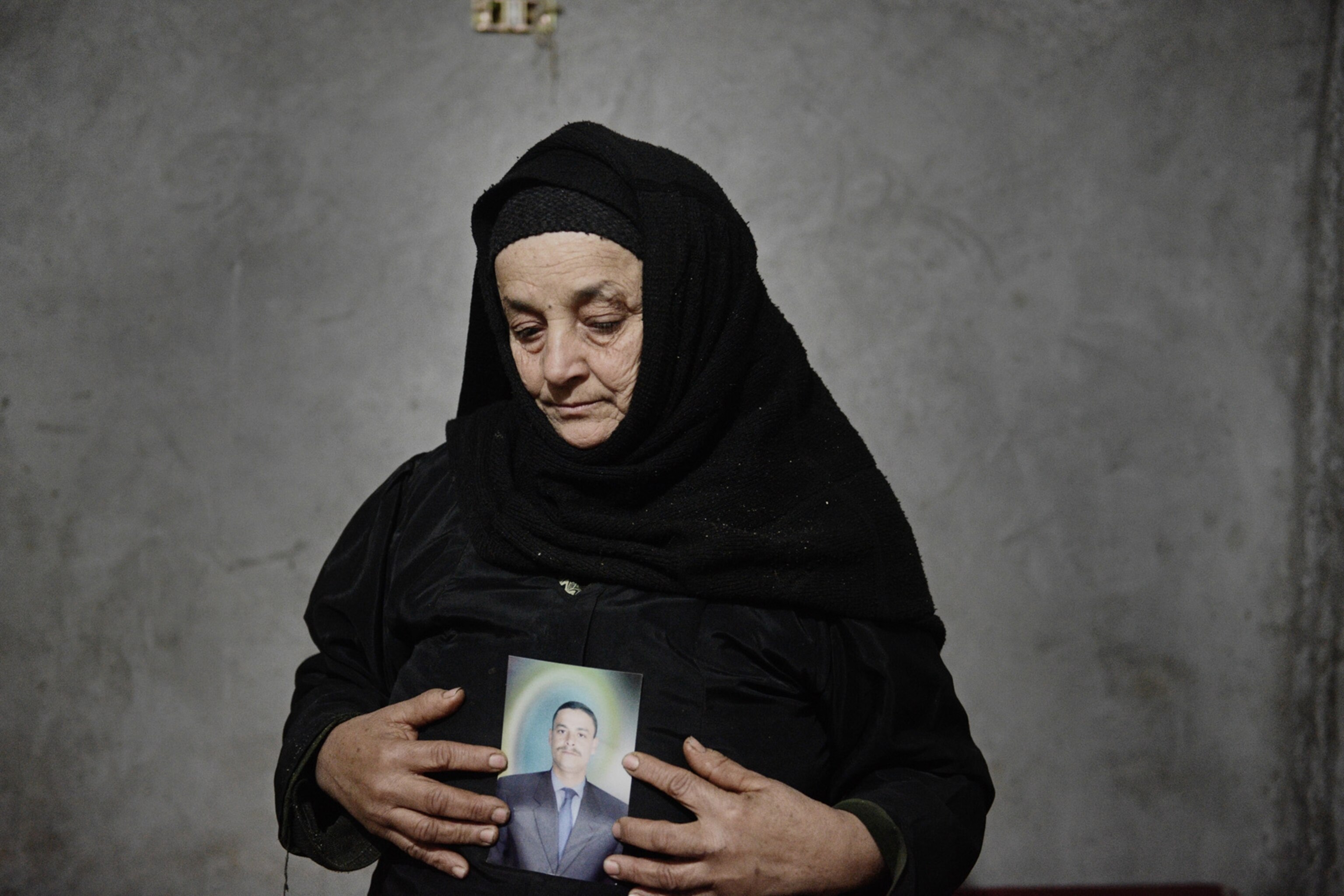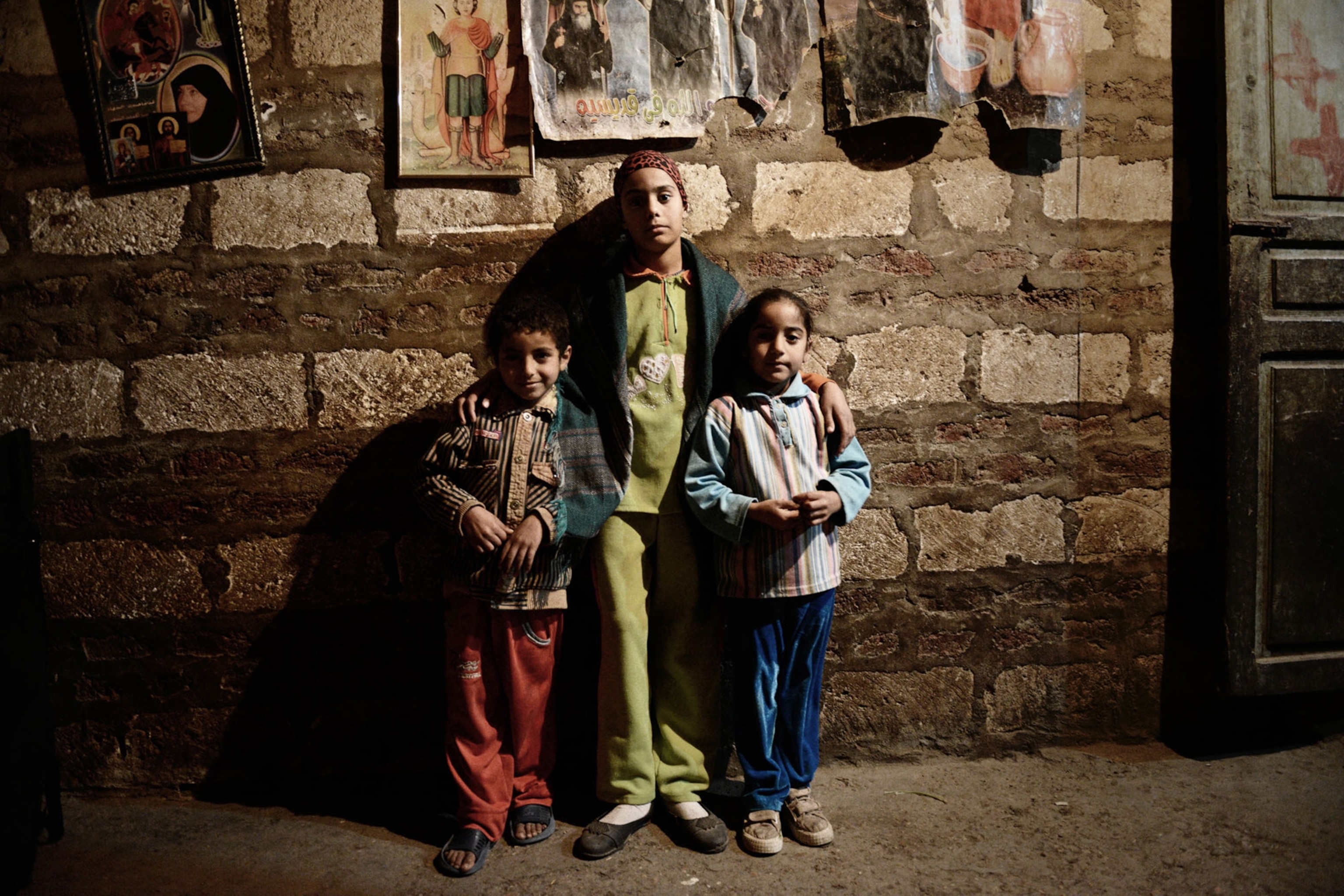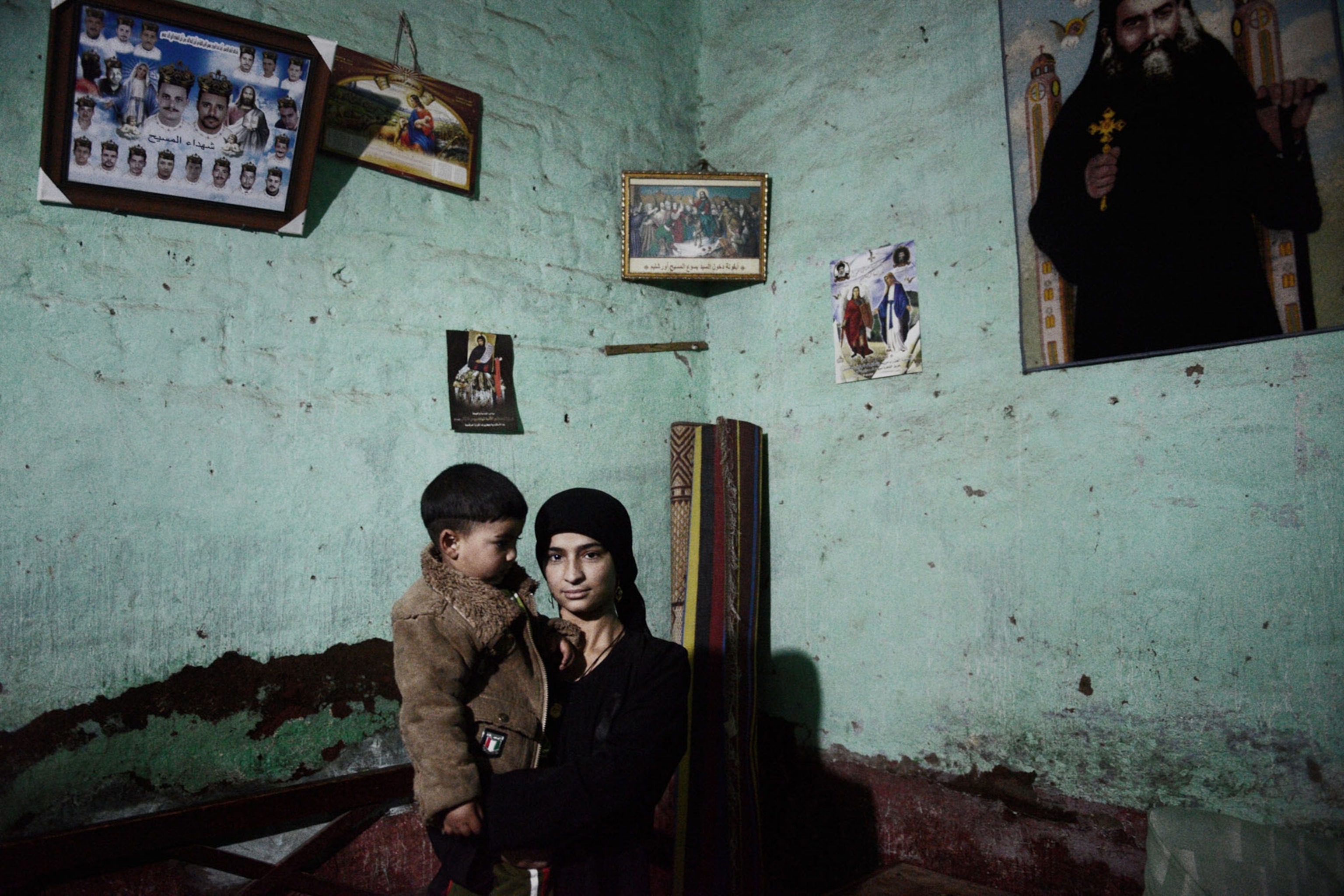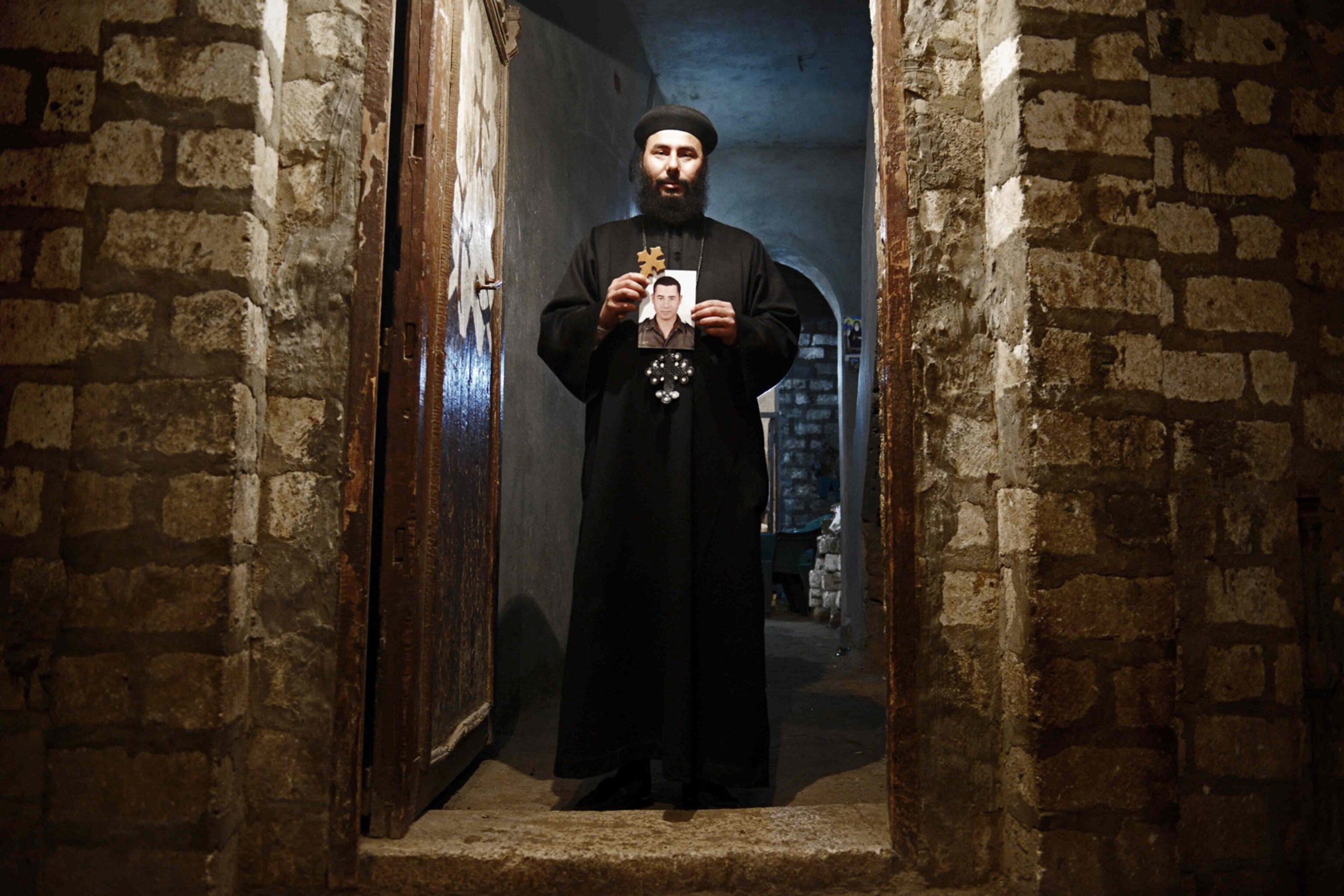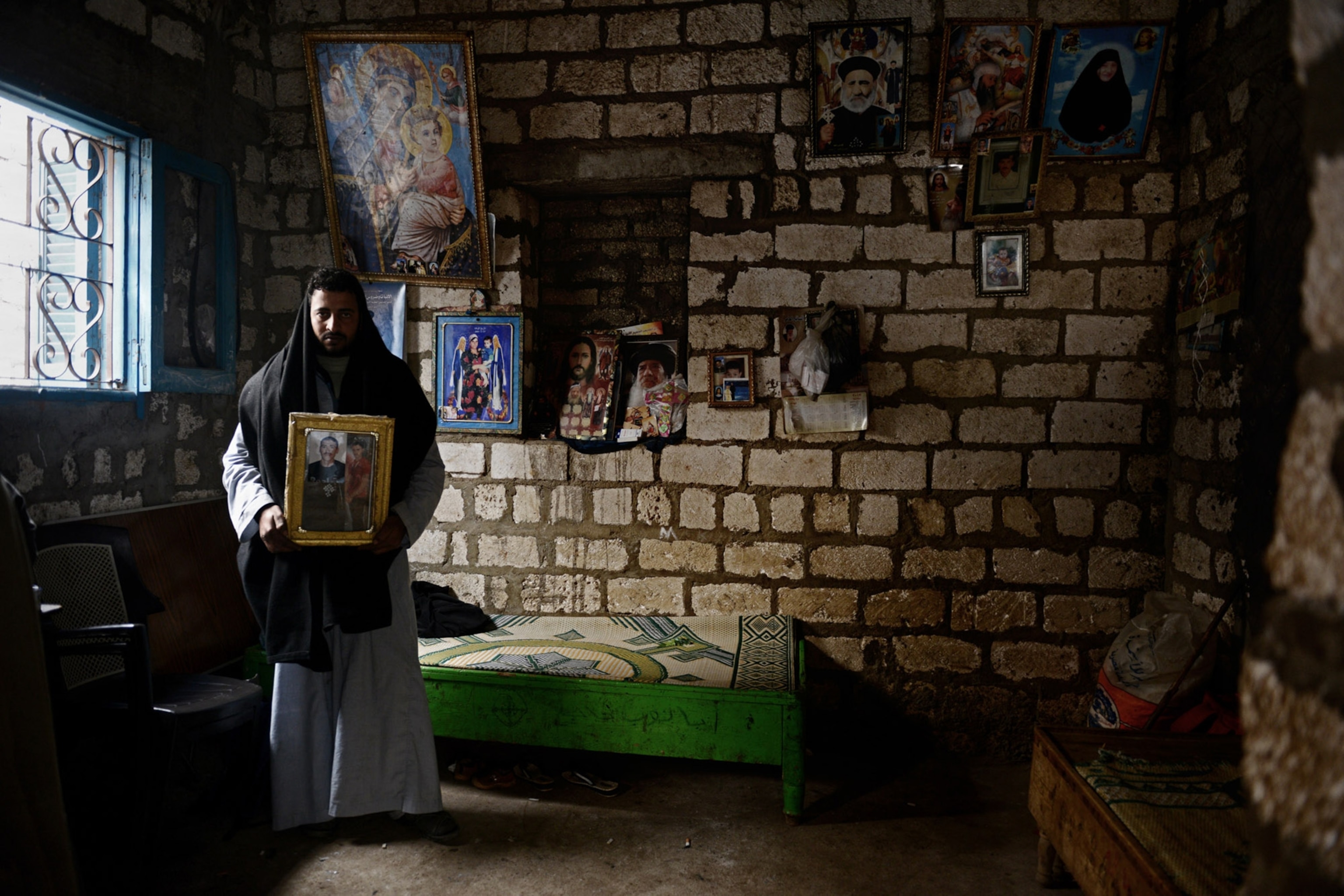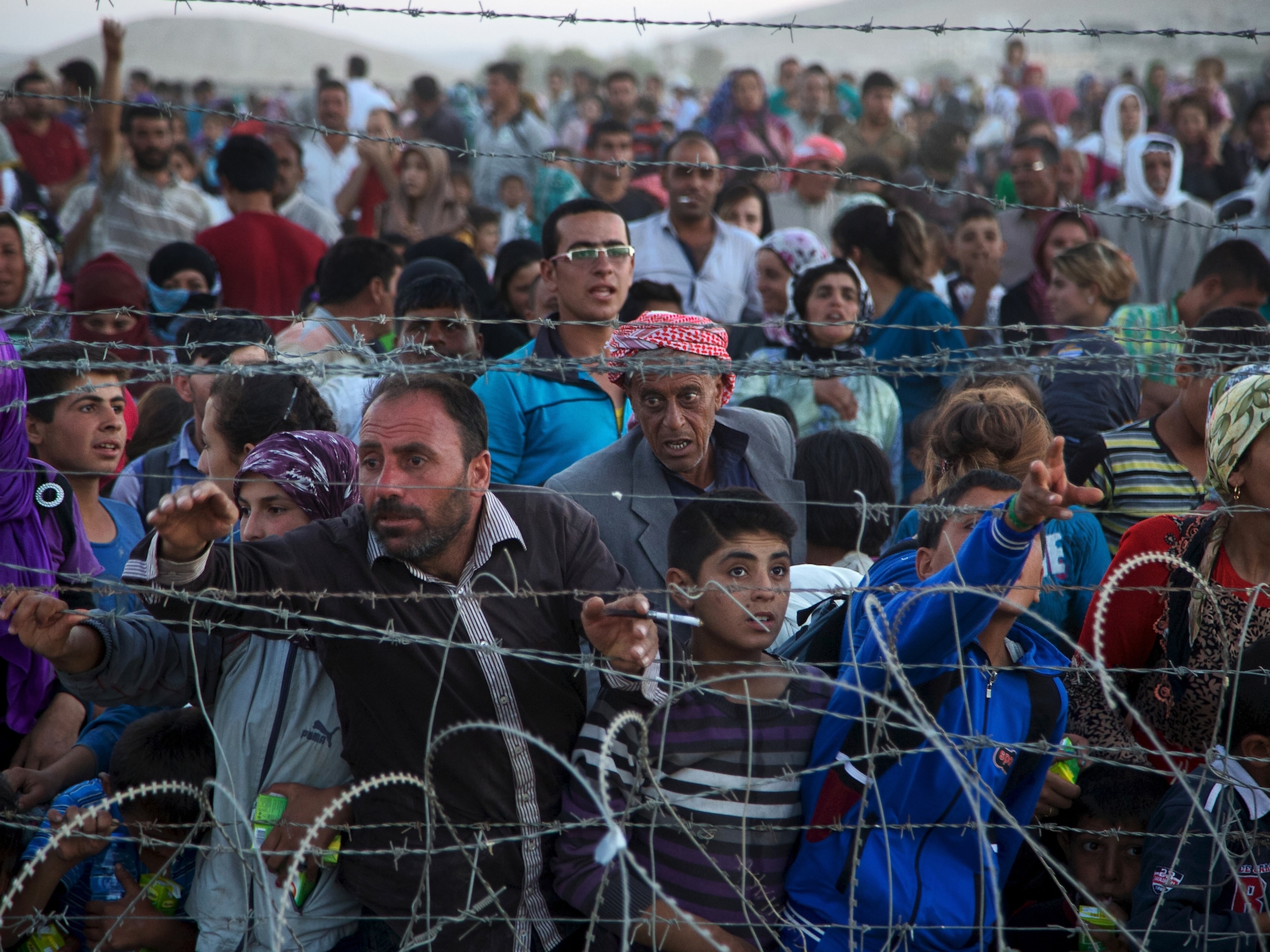Portraits Capture Unexpected Reactions to ISIS Beheadings
An Egyptian photographer finds family members who are happy that loved ones have become "martyrs."
Photographer Jonathan Rashad arrived in the dusty Egyptian town of Al Aour two days after 13 of its residents were shown being beheaded in a video released by the Islamic State, commonly known as ISIS. The town's victims were among 21 Coptic Christians whom ISIS says it beheaded after kidnapping them from migrant worker dormitories in Libya. Rashad, a 23-year-old Egyptian documentary photographer, had come to the heavily Coptic Al Aour, south of Cairo, to shoot portraits of grieving family members. What he found surprised him.
National Geographic spoke with Rashad by telephone:
News outlets had already spread the news of the beheading video and wire services had covered the funerals. Why did you feel this project was necessary?
Everyone was covering the funerals. I wanted to cover what happened after the funerals. The funerals are a moment. I wanted to show the new reality that these deaths had brought to their families.
Were you scared?
I was hesitant to take out my camera. It was a village mostly of farmers and construction workers—very traditional, pretty much countryside with handmade houses, chickens, dirt roads.
You arrived two days after the beheading video was released. How did you navigate the raw emotions?
It’s the difference between taking pictures and asking for pictures. I didn’t start by knocking on doors and intruding. I wanted very much not to be rude. I talked with priests, pastors, whatever. A priest hooked me up with a kid, like 14 years old, who knew all the families. He was the nephew of one of the victims. I would go to their homes with this kid, and we would talk for hours, so that they would know that I was there for a story and not just for a photo.
Do you think your own youth helped too?
Maybe. But I have a Christian name. They’re not sectarian, but I think that helped.
On the one hand, the subjects of these portraits are vulnerable and sort of candid, but on the other they are posed and the result of long discussions. Talk about your process with the subjects.
The most important thing was to respect them as human beings. You don’t want to be creepy. I didn’t want to do a superficial story. I talked for hours and hours. I was there for two days. Many of the families said no. At least four or five times I got a no. And I left. A few days later I came back. They knew I was serious.
What surprised you most?
I would expect people would feel very angry and calling for hatred and revenge and attacks, but many of them were very happy. They said their sons and brothers and husbands were martyrs now. They were the sons of Jesus. God had used them to spread knowledge of Christianity, like sacrifices. One of the mothers was laughing all the time and telling jokes.
What kinds of pressure did you feel in doing this project—political, religious, professional?
Pressure is healthy. The more pressure, the more dedication. On a personal level, I feel very happy and proud. But on a professional level, as a journalist, the work is not over. You never know what’s going to happen next.

